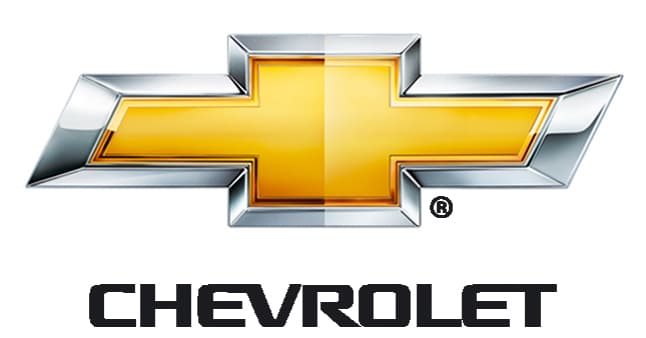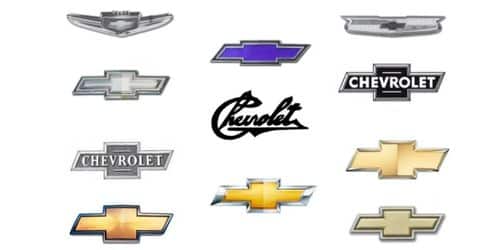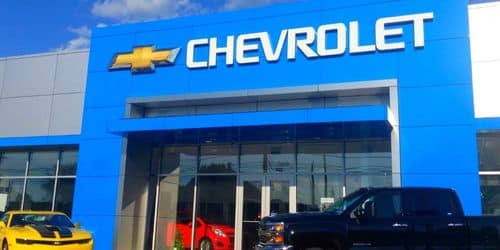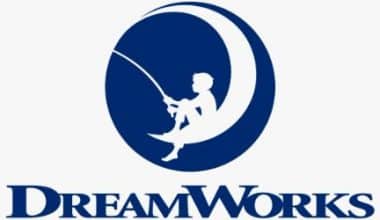Chevrolet started a massive advertising campaign in 1970, focusing on its history from 1911 to the present. Customers were greeted with a General Motors brochure titled “The Chevrolet Story 1911-1970.”
The Chevrolet chronology is now a part of our automotive history. William Crapo “Billy” Durant, one of the founders of General Motors in 1908, and Swiss race car driver and engineer Louis Chevrolet were two of the early pioneers who developed Chevrolet. Chevrolet is one of the most popular and identifiable car brands in the United States, yet it’s surprising how few North Pole-area drivers are familiar with the company’s history. This post will go into detail about the history and logo of the Chevrolet car brand.
Chevrolet History
The Man Behind Chevrolet – LOUIS CHEVROLET (1878-1941)
On Christmas Day 1878, in the Swiss village of La Chaux-de-Fonds in the Jura highlands, a boy was born who would forever revolutionize the world of the automobile. Louis Chevrolet was his name. The Chevrolets relocated to Beaune, France, with their five children (Alfred, Louis, Fanny, Berthe, and Arthur) at the end of 1887 when Louis was just nine years old. Gaston, the seventh child, arrived in 1892, following Marthe, the third daughter.
While his father Joseph worked as a clockmaker, Louis chose to become a mechanic. He got work with the Roblin haulage company, which also repaired carriages and bicycles. According to legend, Louis Chevrolet was summoned from his workshop in the spring of 1896 or 1897 to repair the car of a guest staying at the “Hôtel de la Poste.” Vanderbilt, an American multi-millionaire, owned the vehicle that sparked such excitement at the time. That must have been the point at which Louis Chevrolet “fell in love” twice: once with the vehicle and again with the thought of immigrating to America.
Read Also: Non-Owner Car Insurance: All You Need To Know
Louis Chevrolet acquired another love in Beaune: racing. Around that time, the teenager won several of his first cycle races in the hills behind Beaune.
It was his “Gladiator” cycle that prompted him to travel to Paris in early 1899. He was given a position in the workshop of car maker Darracq (who also produced Gladiator bicycles at the time), where he learned everything he could about the combustion engine. He is also reported to have collaborated with De Dion-Bouton, Hotchkiss, and Mors. But one thing was certain: Louis had succumbed to the “automobile virus.”
He used the money he made in Paris to fund his journey to the American continent, which began in Canada. He worked as a driver and mechanic (which was the same thing at the time) in Montreal before moving to New York a few months later, this time with some money in his pocket.
Chevrolet History: Young Chevvy’s Major Achievements and Difficulties
He began his career in New York by working in an engineering workshop owned by William Walter, a fellow Swiss from Biel who had emigrated to Brooklyn. Louis joined the American branch of De Dion-Bouton in 1901. When he joined his first race in 1905, he made headlines. He drove his Fiat in magnificent style, winning the “Three Miles” on his first attempt and setting a new one-mile speed record. His top speed was 109.7 km/h. The achievement catapulted him to celebrity overnight, and the following year, he shaved another second off his own world mile record. He also beat the world record for a 68-mile run. In 1906, he collaborated with Walter Christie on the development of a new racing automobile with front-wheel drive and a Darracq V8 engine. As a result, a new world record of 191.5 km/h was set.
However, the name Chevrolet was destined to become even more well-known: In the years that followed, Arthur and Gaston followed their now-famous brother into the world of motor racing, resulting in three Chevrolets on the starting grid for races. In most cases, however, Louis was the hero, and the Americans dubbed him “the dare-devil Frenchman.”
Louis competed in many races over the next few years, driving a Buick, a Cornelian, and, above all, a Frontenac he constructed himself. Gaston and Louis competed in the “Indianapolis 500” in 1916, each in a Frontenac, but neither finished. After the First World War, the great races resumed in 1919. Despite some significant accidents in Indianapolis, the Chevrolets finished far up the field, with Louis finishing seventh and Gaston ninth.
Is Chevrolet either French or Swiss
The founder of Chevrolet was born in Switzerland. His name was Louis Chevrolet. End of 1887, when Louis was only nine years old, the Chevrolets relocated to Beaune, France, with their five children (Alfred, Louis, Fanny, Berthe, and Arthur), where the family continued to expand. 1 Jan 2009
Is Chevrolet a car worth purchasing?
Consumer Reports’ reliability scores placed Chevrolet ahead of competitors such as GMC and Ford. Additionally, Chevrolet succeeded in the aspect of customer satisfaction.
Is Chevrolet, a German automobile?
Chevrolet (/vrle/ SHEV-r-LAY; officially the Chevrolet Motor Subsidiary of General Motors Company) is an American vehicle division of the American automaker General Motors (GM).
Read Also: MERCEDES BENZ: The Untold Story of the World’s No. 1 Car Brand
One year later, seven Frontenacs (four of them under the name Monroe) qualified for Indianapolis, but the race turned out to be a dramatic experience: Louis Chevrolet, always eager to use the most recent materials, chose at the last minute to add some track rods made of vanadium. Unfortunately, the vanadium had not been adequately hardened. As a result, one automobile after another had to pull out. Only Gaston Chevrolet completed the famed race, winning with an average speed of 141 km/h.
The boys’ racing careers, though, took their toll. Louis Chevrolet spent three years in the hospital after a series of mishaps between 1905 and 1920. His brother Gaston was killed during racing in Beverly Hills, Los Angeles, on November 25, 1920. Louis Chevrolet never competed in another race after that.
Chevrolet History: Chevrolet’s Creation
Louis Chevrolet and William C. Durant, the founder of General Motors, crossed paths multiple times through his engagement with Buick as a racing driver. On November 3, 1911, “Billy” Durant noticed Louis Chevrolet’s great abilities and joined forces with him to form the “Chevrolet Motor Car Company.” The first Classic Six models departed the Detroit factory in early 1912.
Louis Chevrolet had always aimed to make high-quality automobiles, but Durant noticed the “people’s car” trend early on. His goal was to make cars as cheaply as possible. Because none of the two protagonists would budge, Louis Chevrolet threw in the towel and quit his own firm in 1913. He did, however, leave his name behind.
The worst failure of William Crapo Durant resulted in the development of Chevrolet. A year after founding General Motors, he set his sights on Henry Ford’s third and most successful automobile firm. According to Lawrence R. Gustin’s biography of Durant, Ford was concerned about Selden’s patent suit claiming the creation of the automobile and was willing to sell it to GM in exchange for the rights to motorized farm implements.
GM agreed to pay Ford $2 million in cash plus $4 million in interest over three years. Gustin states in “Billy Durant, Creator of General Motors” that on October 26, 1909, GM’s board “granted Durant power to purchase Ford if funding could be arranged.”
Banks were wary of the fledgling, fly-by-night auto sector and rejected Durant a $2 million downpayment loan. During a financial crisis in 1910, GM’s board of directors fired Durant and allowed bankers to take over his company.
Read Also: BUYING A RENTAL CAR: Pros and Cons
Durant began working on his comeback in early 1911 when he established his own Detroit shop with retired Buick racer Louis Chevrolet. Durant went to Flint, Michigan, where he had founded GM in the early 1900s, and purchased the bankrupt Flint Wagon Works assets. He then enlisted the help of former Buick engine manufacturer Arthur C. Mason to launch a new venture, while Durant established the Little Motor Car Company.
On November 3, 1911, Durant established the Chevrolet Motor Company. Although Louis Chevrolet was not an executive, he experimented with huge luxury automobiles while Chevrolet Motor Company’s Little brand marketed lower-priced cars to compete with Ford. The enormous, $2500 Classic Six of 1912 was the first “production” Chevrolet, but the first Chevys as we know them were the 1914 Royal Mail roadster ($750) and Baby Grand touring car ($875-$1475). Louis Chevrolet resigned from his name-brand firm to return to racing.
Durant’s 1916 Chevrolet Four-Ninety ($490) was a direct competitor to the Ford Model T. Chevy was booming by this point, with plants in cities like Flint and New York City. Its success provided Durant with the means to purchase GM stock with the assistance of the DuPont family and a New York bank president, Louis J. Kaufman. Durant conducted a revolution and regained control of GM on September 16, 1915, the company’s seventh anniversary.
According to Gustin, on December 23, 1915, Chevrolet stockholders boosted capitalization from $20 million to $80 million and used the $60 million to purchase GM stock. Chevrolet purchased General Motors. It didn’t work the other way around.
Read Also: KOREAN CAR BRANDS: Best 19+ North & South Korean Car Brands in USA
However, Louis Chevrolet desired to continue designing. In 1926, he and his brother Arthur formed a firm called “Chevrolair 333” and began designing a light aircraft engine. When he had a falling out with his brother, the company came to an end.
Louis promptly established the “Chevrolet Air Car Company” in Indianapolis, but it was forced to close during the subsequent economic downturn. His final significant “engineering coup” was a 10-cylinder radial engine for which he submitted for a patent in 1932. But by the time the invention was eventually registered on February 19, 1935, Louis was too weak to rebuild the company. Instead, he worked as a mechanic, as he had done at the start of his professional career. His employer was the Chevrolet assembly facility in Detroit.
Louis Chevrolet grew unwell and had a stroke in 1934. Charles, his 27-year-old son, died the same year. Alfred, his second son, resided in Detroit until 1971 when he died at the age of 59.
Louis Chevrolet died on June 6, 1941, at the age of 63, in Lakewood, Michigan, east of Detroit. He left a legacy of millions of cars carrying his name. An American journalist once questioned him if he was famous because of the Chevrolet brand or the other way around. Chevrolet responded cheerfully: “It had a little of everything.” But one thing is certain: I was the first to arrive…”
Why is the name Silverado used?
The origin of the word “Silverado.” The phrase “Silverado” is a combination of the English word “silver” and the Spanish word “El Dorado.” It is open to interpretation, but one plausible explanation is that it alludes to “a place of silver” or simply “the silver.”
Which automobile is superior, Toyota or Chevrolet?
Toyota: Reliability. In the J.D. Power Vehicle Dependability Study (VDS), Toyota has continuously ranked in the top five, although Chevrolet has never achieved such a lofty position.
Is Chevrolet superior to Ford?
When comparing the reliability ratings of Ford and Chevrolet automobiles, Chevrolet tends to rank higher on average. The brand’s pickups, sedans, and SUVs are among the most reliable on the market.
Important Dates in Chevrolet’s Evolution and Success Story
William S. Knudsen, Ford’s head of manufacturing, leaves to become Chevrolet’s production chief and, eventually, vice president of operations. In ’24, he aims to match Ford’s sales “one for one.”
- 1923: Chevy’s Copper Cooled models have air-cooled engines 1923. Charles Kettering made a rare engineering error. Only 759 are manufactured, 500 are distributed to dealers, and 100 are sold.
- 1927: President Alfred Sloan recruits Harley Earl, a California custom coachbuilder, to lead GM’s new Art & Color department in 1927. Even at the low end of Sloan’s price range, Chevy becomes known for style and model upgrades on an annual basis.
- 1929: Chevrolet launches the Stovebolt Six “for the price of a four,” with a displacement of 194 cubic inches and a power output of 46 horsepower.
- 1936: The first Suburban Carryall, an eight-seater truck-based utility passenger wagon, is introduced.
- 1947: Chevrolet develops the Cadet compact car, but abandons plans since Americans have no motive or desire to buy little cars.
- 1950: The model year 1950 Powerglide is the first low-priced brand with a fully automatic transmission, beating Ford and Plymouth to the market.
- 1953: In January 1953, the Corvette makes its debut at GM’s Motorama in New York’s Waldorf-Astoria hotel. Half a year later, production begins in Flint.
- 1955: Chevrolet introduces its first V-8 engine in 37 years. Ed Cole had taken Small Block to production in “Motorama-styled” versions in under 28 months. The Tri-Five Bel Airs went on to become some of the most valuable cars in existence.
- 1959: The all-new Impala, Bel Air, and Biscayne debut with radical, horizontal rear fins. The research stages of an air-cooled, rear-engine V-8 Impala were not completed.
Read Also: MERCEDES BENZ: The Untold Story of the World’s No. 1 Car Brand
- 1960: The Corvair, Chevrolet’s first in a succession of unsuccessful world-class compact vehicles, debuts with an air-cooled, rear-mounted flat six-cylinder engine.
- 1961: Semon E. “Bunkie” Knudsen, son of William S., leaves Pontiac to become Chevrolet’s top engineer in 1961. His Impala Super Sports compete with the sportier full-size counterparts from Pontiac.
- 1965: For the first time in history, Chevrolet auto and light truck sales in the United States exceed 15 million, with two- and four-door Impalas accounting for 803,400 of the total. Chevy sells over one million Impalas, Bel Airs, and Biscayne. Chevy launches the $200 Caprice option for the Impala four-door hardtop in mid-1965, in response to Ford’s new LTD and infringing on Olds 88 territory.
- 1967: The new Ford Mustang/Plymouth Barracuda challenger, codenamed Panther and dubbed Camaro, makes its debut.
- 1971: The Vega, Chevy’s second failed effort at a world-class little car, debuted in 1971. The May issue of Motor Trend compares a $9081 Cadillac Sedan de Ville against a $5550 Chevy Caprice and determines that the Cadillac is better, but not by $3500. It’s also the model year of Chevrolet CEO John Z. DeLorean’s personal Caprice limo, which is built on a Cadillac Fleetwood 75 frame and Chevy sheet metal. Before John Z. can even turn the steering wheel, GM President Ed Cole orders that the car be demolished.
Read Also: FRENCH CAR BRANDS: 21+ Old French Car Brands in the USA (Exhaustive List)
- 1976: The Chevette, Chevy’s third failed effort at a world-class little car, was introduced.
- 1980: The Citation, Chevy’s fourth failed effort at a world-class little car, debuted in 1980.
- 1989: Geo, Chevy’s first sub-brand (similar to Cadillac’s LaSalle), rebadges Nova, Sprint, and Spectrum in 1989.
- 1997: The all-new C5 Corvette is introduced, and the Malibu nameplate returns. Chevrolet trucks outsell Chevrolet sedans.
- 2002: The Corvette Z06’s Small Block engine produces 405 horsepower. The F-body Camaro was introduced last year.
- 2008: The all-new Malibu with Renaissance style debuts as a model year.
- 2009: GM declares bankruptcy in 2009. Year of production for the 638-horsepower Corvette ZR1.
- 2010: This is the model year for the new Camaro.
- 2011: is the model year for Chevrolet’s latest and most powerful attempt at a world-class little vehicle, the Cruze, as well as the innovative extended-range electric Volt.
Chevrolet Logo

At first glance, the Chevy bowtie logo attempts to convey the value delivered by the brand. For well over a century, many variations of the bowtie logo have graced Chevrolet vehicles.
The Chevy logo, which is sometimes described as a cross or a bowtie, is clearly identifiable wherever you are in the world. However, its significance is difficult to grasp.
The Chevy logo is a large, short gold cross with a grey outline. Chevrolet co-founder William C. Durant originally used the cross or bowtie sign in 1913.
While the date of its debut is well-known, Chevrolet claims the company’s origins are somewhat obscure. According to Chevy, Durant observed a design on wallpaper while vacationing in Paris and chose to use it as the company’s logo.
Margery Durant, Durant’s daughter, believes the design is entirely original. Margery noted in a book about her father that her father would often sketch nameplate ideas. Durant’s wife, Catherine, claims that the logo was inspired by a newspaper advertisement she saw in Virginia. Durant saw the commercial and thought it would be excellent for the Chevrolet symbol, according to Catherine.
The second explanation looks to be the most likely because Ken Kaufmann, the editor, and historian of the Chevrolet Review, identified a variant of the Chevy logo in a newspaper advertisement in November 2011.
Whatever the case, Chevrolet’s bowtie logo has become one of history’s most recognizable symbols. It’s also one of the most recognizable logo designs, with many elements remaining consistent throughout the history of Chevrolet.
The History and Evolution of the Chevrolet Logo

Whatever its origins, the Chevrolet bowtie is now a globally recognized visual signature. Several modest changes have been made to the design over the years to make it look more current.
The “Chevrolet” logotype was also used for many years before being phased out in 1985. The insignia has gained and lost weight, and it has even been engulfed by other shapes. Here is the whole history and evolution of the Chevrolet logo since its debut in 1913.
1911: Chevrolet’s Original Logo Was a Signature
The Chevy logo was inspired by co-founder Louis Chevrolet’s signature. It was created in a blacked-out, bold handwritten manner and was only utilized for a short time between 1911 and 1914.
1913: Chevy’s first bowtie emblem was introduced
The renowned bowtie insignia was created in 1913, giving rise to the countless original stories we hear today. This was the beginning of iconic branding for one of the country’s oldest automotive manufacturers.
The first Chevy bowtie logo was understated, with white and light blue accents and a gold outline. Until 1934, the name “Chevrolet” appeared across the bowtie.
1934: A monochrome design was introduced.
Chevrolet ditched the light-colored palette in favor of a monochromatic design, with the word “Chevrolet” presented in a more modern typeface. The letters were larger, giving the insignia a more serious appearance than before. This version was in use until 1940.
1940: Chevy Becomes Colourful Again
Chevrolet decided to bring back the blue-gold combination, but this time with a flatter shape. The colors were more vibrant and exuded a more youthful mood. The gold outline was now thicker and only visible outside the cross. This variant was in service until 1957.
1957: Chevy’s Quirkiest Bowtie Ever Is Unveiled
The 1957 Chevrolet bowtie model is one of the oddest designs in the automaker’s history. To begin with, it was a giant red oval with a bowtie on the inside.
The text was also red, with white accents on the inside of the emblem. There is no clear reason for this sudden adjustment, but some historians believe it was done to highlight Chevrolet’s performance. This version was short-lived, as it was phased out in 1960.
1960: A Minimalistic Chevy Bowtie is Introduced.
Chevrolet chose a monochrome style once more, resulting in the simplest bowtie logo yet. The emblem was composed of a narrower black outline with the wordmark printed in italics and finished in black. This version was in use for a long time, from 1960 to 1977.
1977: Aesthetic Improvements to the Chevy Bowtie
Chevy returned to blue, but this time the designers were inspired by the old logo and put a thin white outline inside the bowtie. The word “Chevrolet” was now smaller and put in the center of the emblem.
1985: Chevy Unifies the Bowtie into a Single Emblem
The bowtie logo hit a tipping point in 1985 when the original variant of the present logo we’re all familiar with appeared. Furthermore, it was the most significant change that saw the logo attain global prominence with its debut TV commercials.
Chevrolet also dropped the “Chevrolet” wordmark on the inside, resulting in the world’s first single-symbol logo. This version of the logo was in use until the year 2000.
2000: The Chevy Bowtie goes 3D.
Chevy chose red again in 2000, this time with a more modest design based on a single symbol. The old flat design was replaced by a 3D design finished in a reddish color. This is the modern minimalist version of the 1960s monochrome.
2004: Chevy Bowtie Introduces Gold
Chevy began utilizing gold in its bowtie symbol in 2004, a departure from the company’s previous practice of adding bright and unusual elements to its emblem. The new design emphasized Chevrolet’s status as one of the world’s most recognized emblems. Until 2011, this version was in use.
2011: The Chevy Modern Bowtie of Today is Unveiled.
Chevy updated the popular golden bowtie logo in 2011 by adding a bolder silver outline. The gold-filled section was likewise patterned, and the insignia was unveiled to commemorate Chevrolet’s 100th anniversary. This is still the company’s corporate logo today.
Chevy has made some small changes to the logo that appears on all of its vehicles globally. Minor changes have frequently been made to suit the front grille or curved surface of automobiles.
Elements of Chevrolet Logo Design
Today’s Chevrolet insignia is a textured classic golden bowtie with a smooth chrome frame. The textured gold appears to be a set of headlights, while the silver framing adds an element of elegance and strength.
Chevrolet utilizes the “Chevrolet” wordmark beneath the bowtie on occasion. However, the emblem has grown so famous that it may be recognized even without knowing the brand’s name. Chevy’s logo is straightforward, clean, and easy to recognize.
Today, the Chevrolet logo includes the following elements:
Chevrolet Logo Colours
Throughout the years, Chevrolet has experimented with numerous hues for their symbol. The most identifiable color today are the golden Chevrolet bowtie with a silver outline. The wordmark is typically shown in either white or black.
Chevrolet’s Bowtie
The Chevrolet bowtie is the most enduring of the Chevy logo design elements. Although the origins of the iconic cross picture are unknown, it can now efficiently distinguish a complete fleet of vehicles anywhere in the world.
Chevrolet Font
Chevrolet font is bespoke sans serif font designed exclusively for Chevrolet. There are similar variations available today, such as the Aviano Future typeface, which may be seen here.
Celebrating the Chevy Logo
The Chevrolet logo is an amazing example of how even the most basic design can have a significant impact on a company’s reputation. Though the history of the Chevrolet logo is hazy, the company has successfully developed a memorable brand throughout the years.
With each subsequent iteration of the Chevy symbol, the organization was able to effectively communicate vital information about the vehicles they had to sell.
Today, the Chevy logo is a globally recognized image. The gold and silver colors of Chevrolet logo transmit elegance and class, while the vintage bowtie reminds buyers of the brand’s history.
Although the wordmark can appear alongside the Chevy insignia, the Chevrolet bowtie is more commonly seen standing alone. This is a great example of how a memorable logo can eliminate the necessity for a brand name to appear on merchandise.
Whatever you think about the Chevy logo’s meaning and where the design originated, it’s tough to deny the effect this image has today.
Changes to the Chevrolet Slogan
Every now and then, Chevrolet’s advertising staff gets the itch to test out a new tagline. We’ve had some terrific ones in the past, including “Baseball, Hotdogs, Apple Pie, and Chevrolet,” “Like a Rock,” and our (current) “Chevy Runs Deep.” Chevrolet will now use the global tagline “Find New Roads.”
“Find New Roads” embraces the spirit of inventiveness that has been in Chevrolet’s DNA since its inception and will continue to govern every part of our business moving ahead,” said Mary Barra, senior vice president of Global Product Development. “We’ve been selling Chevrolet vehicles all over the world for nearly a century, but this is the first time we’ve come together behind a single global goal.”
Here’s a rundown of Chevrolet taglines from the 1950s to history:
- See The U.S.A. In Your Chevrolet (1950s–1960s)
- Putting you first keeps us first (the 1960s)
- It’s Exciting! (mid-1960s)
- Building a better way to see the USA (early 1970s)
- Baseball, Hotdogs, Apple Pie & Chevrolet (1975;2006)
- Chevy makes good things happen(1982)
- USA-1 is Taking Charge (1983)
- Today’s Chevrolet—Live It (1985)
- The Heartbeat of America (1987–1994)
- Rock, Flag and Eagle (1985–1987)
- Genuine Chevrolet (1994–2001)
- We’ll Be There (2001–2004)
- Like a Rock (1991–2004 Truck slogan)
- An American Revolution (2004–2009)
- Our Country, My Truck (2006–2007 Truck slogan)
- America’s Best Trucks (2007–present Truck slogan)
- May the Best Car Win (2009–2010)
- Excellence for Everyone (2010 (short-lived))
- Chevy Runs Deep (2010–present)
- Find New Roads (2013-Present)
Wrap Up on the History of Chevrolet
Chevrolet, often known as the Chevy, is a US vehicle division of American automaker General Motors (GM). Louis Chevrolet and GM founder William C. Durant founded the corporation in 1911 as the Chevrolet Motor Car Company.
The first official Chevrolet model, the Series C Classic 6, was produced in 1913, and the well-known bowtie logo appeared only after the 1914 Model H series. Chevrolet was acquired by General Motors in 1919 and became well-known for its high-quality trucks.
Chevrolet’s portfolio in America includes famous performance vehicles like the Camaro and Corvette, dependable, long-lasting SUVs and pickups like the Suburban and Silverado, and award-winning crossovers and passenger cars like the Traverse, Equinox, and Malibu.
Most new Chevrolet models include convenience, safety, and security systems like OnStar Hands-free Calling, Stolen Vehicle Showdown, and Automatic Crash Response, among others.
Related Articles
- HOW TO TRADEMARK A LOGO: Best US practices, Requirements & What you should know
- MERCEDES BENZ: The Untold Story of the World’s No. 1 Car Brand
- WHAT IS THE SAFEST CAR: 15+ Safest Car in the World 2022
- STARBUCKS LOGO: Evolution, Significance, Branding Models & Tips






